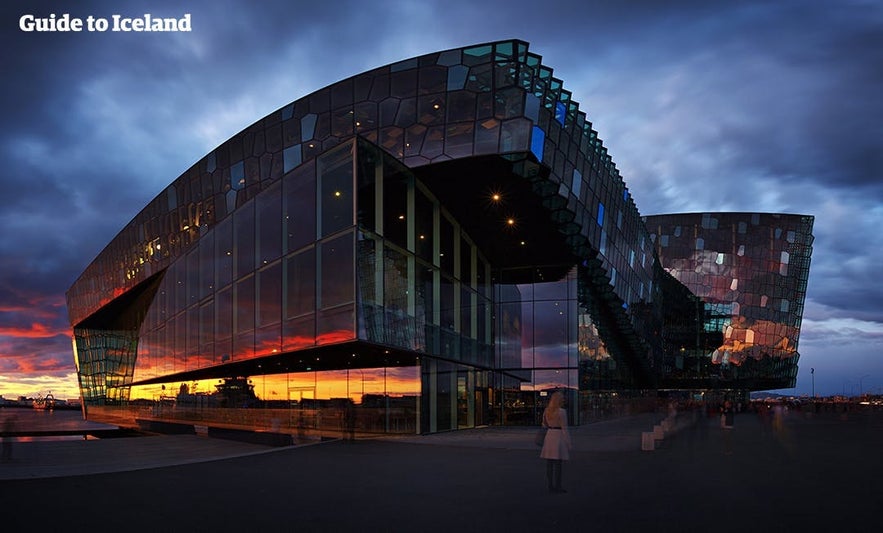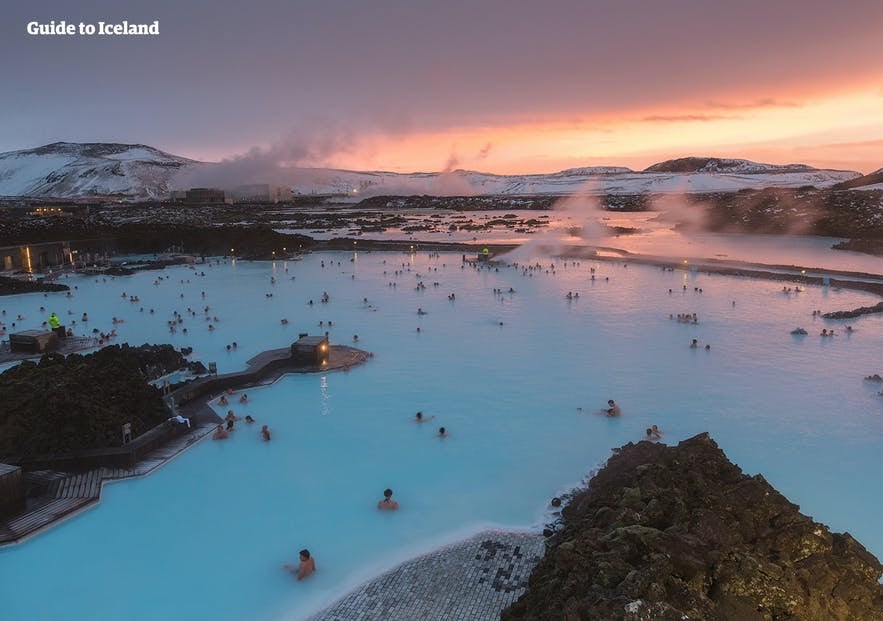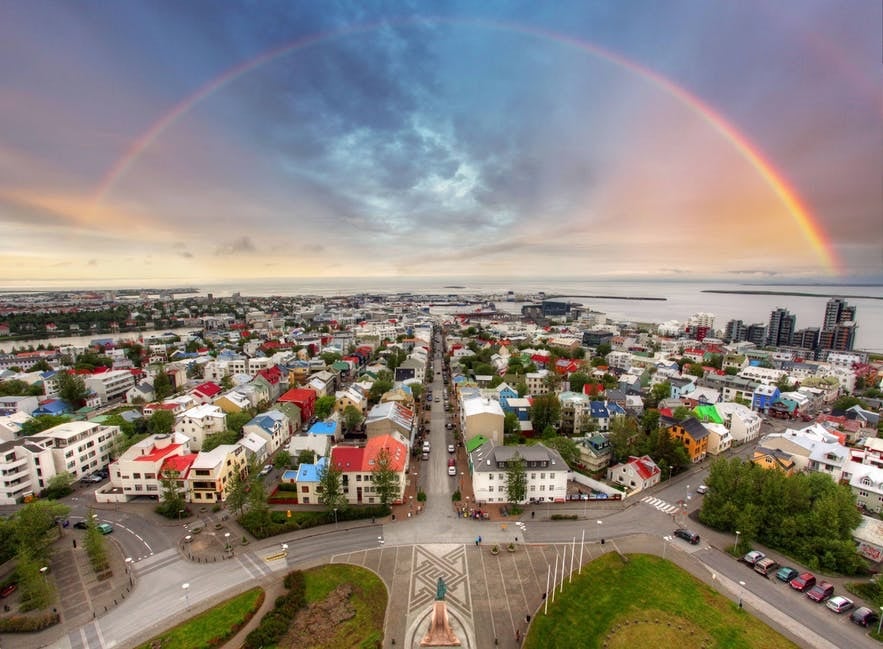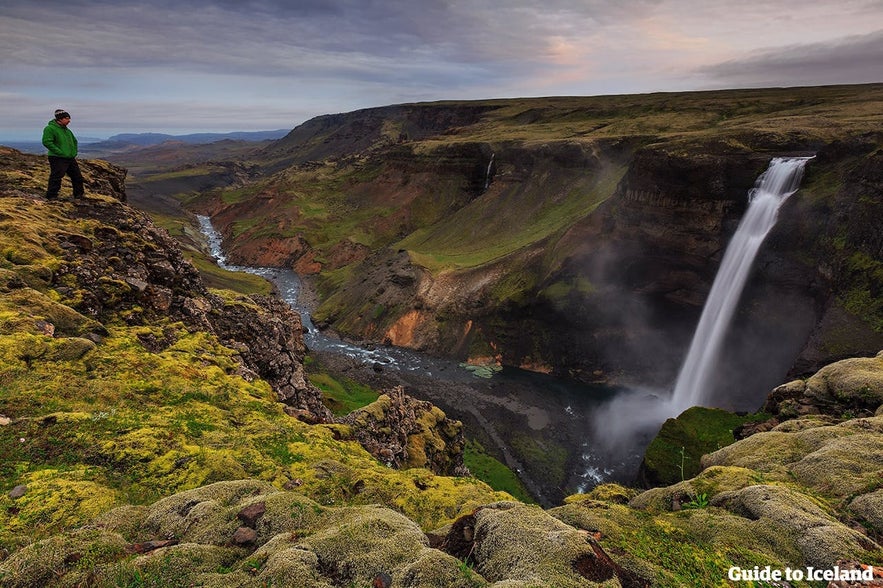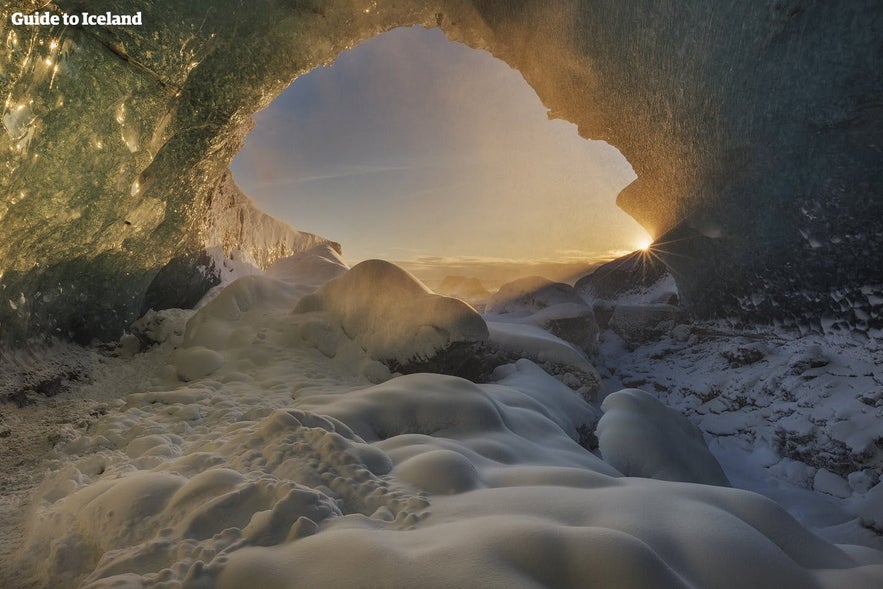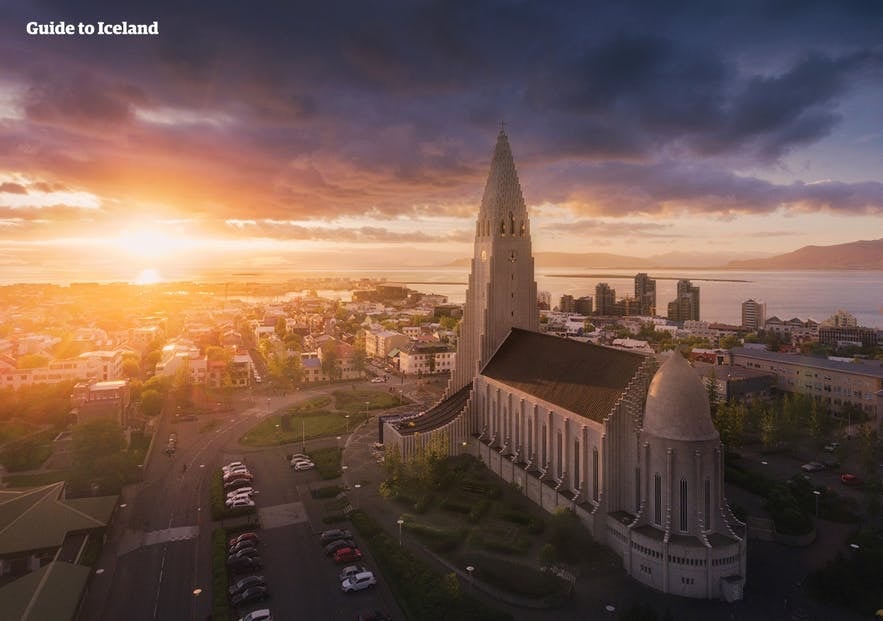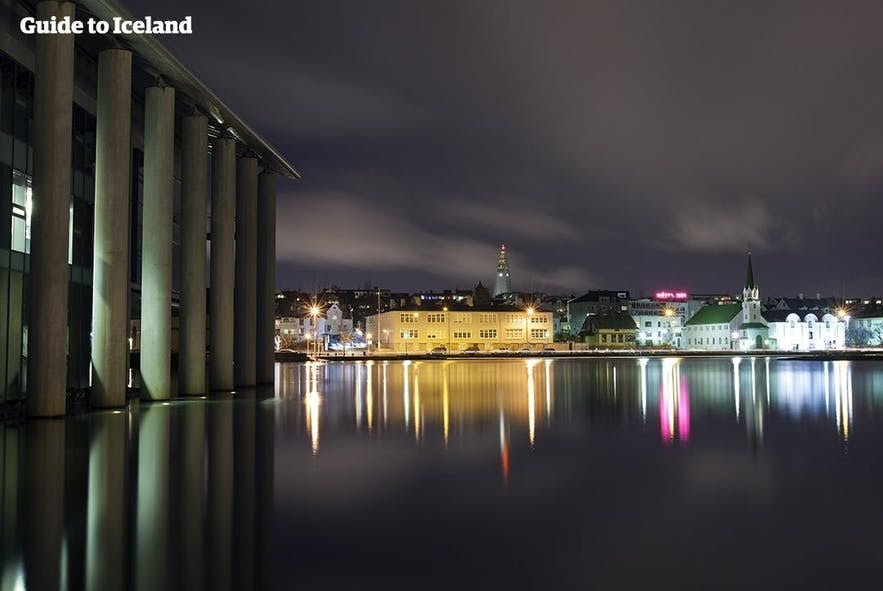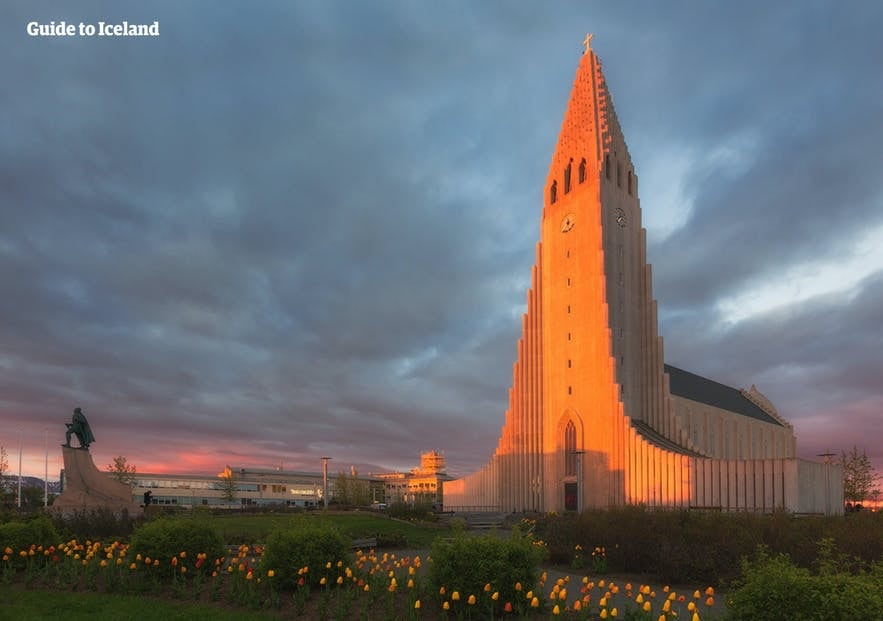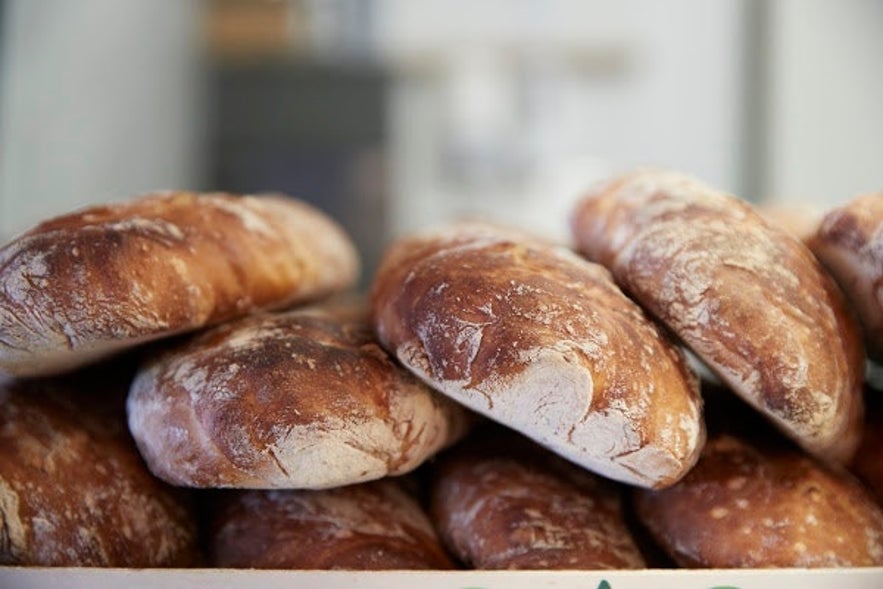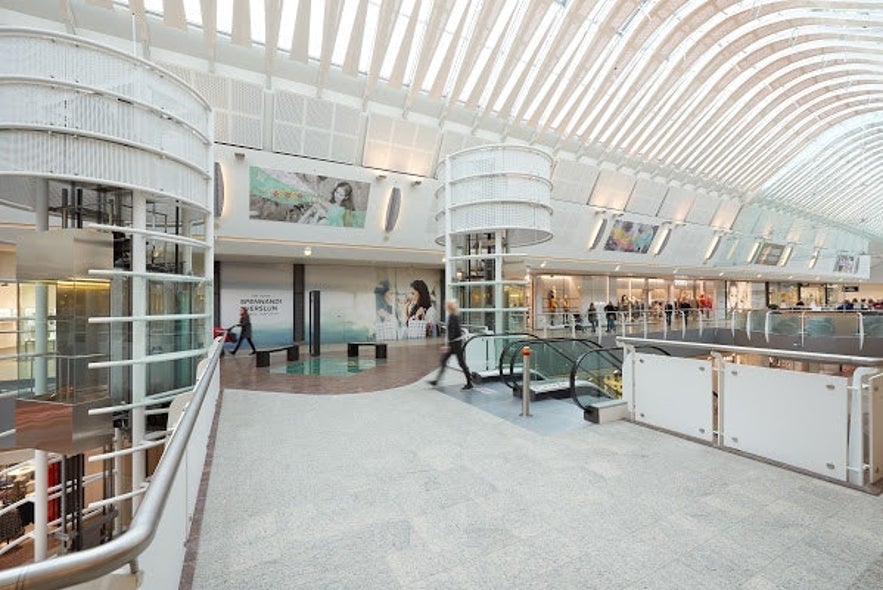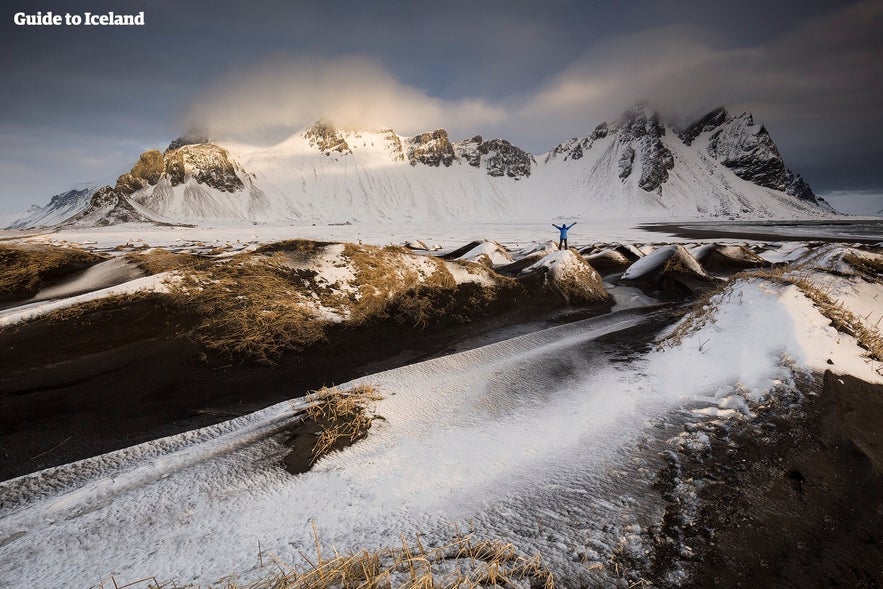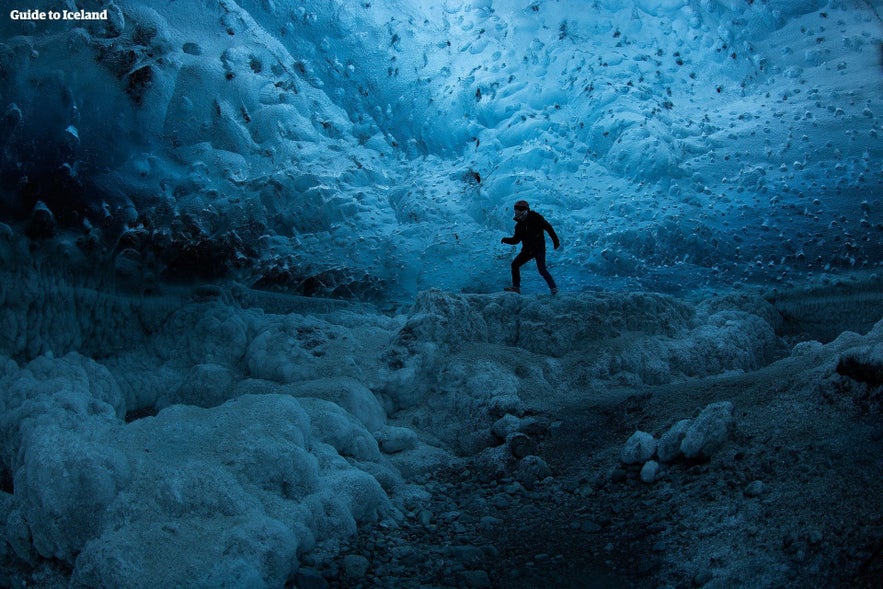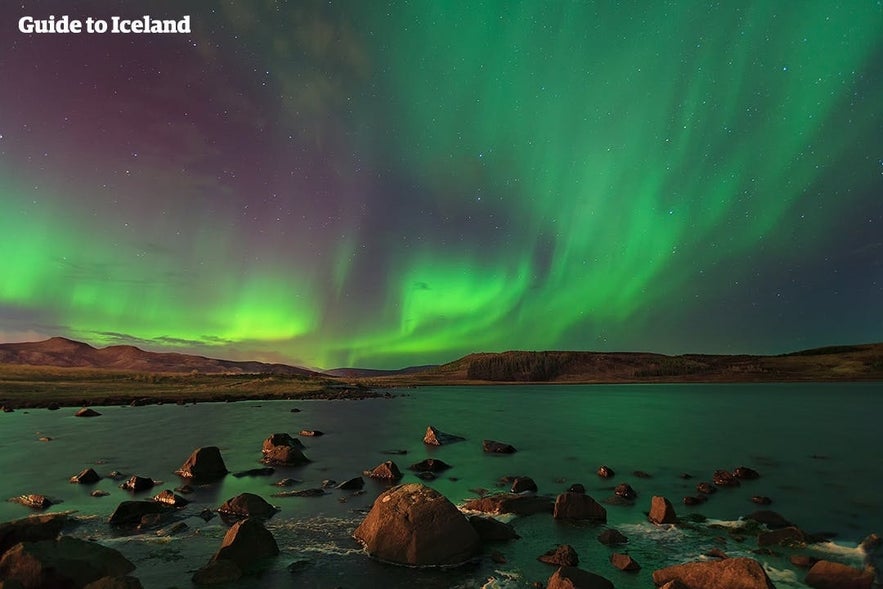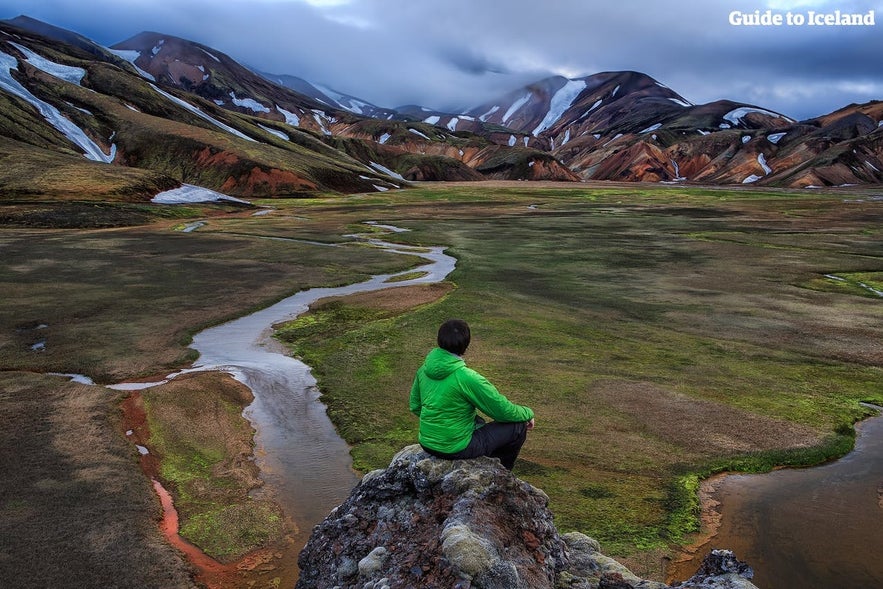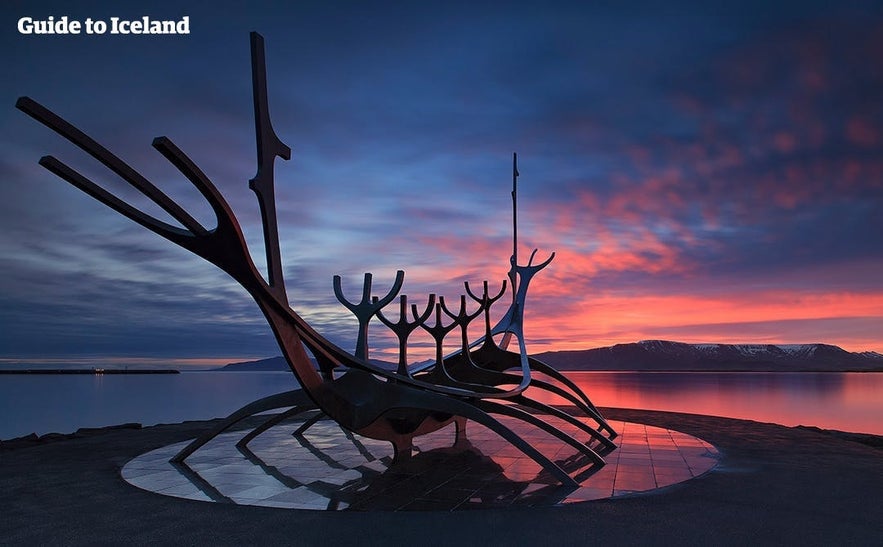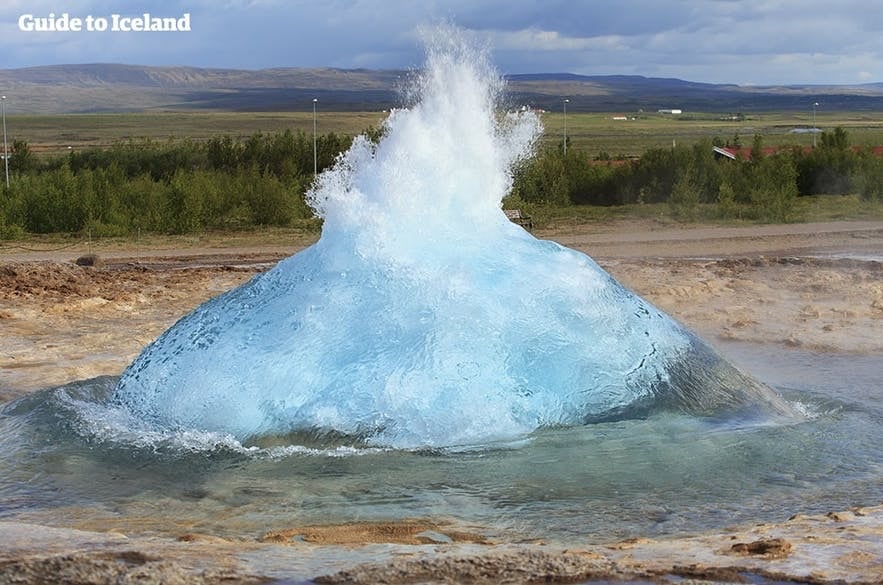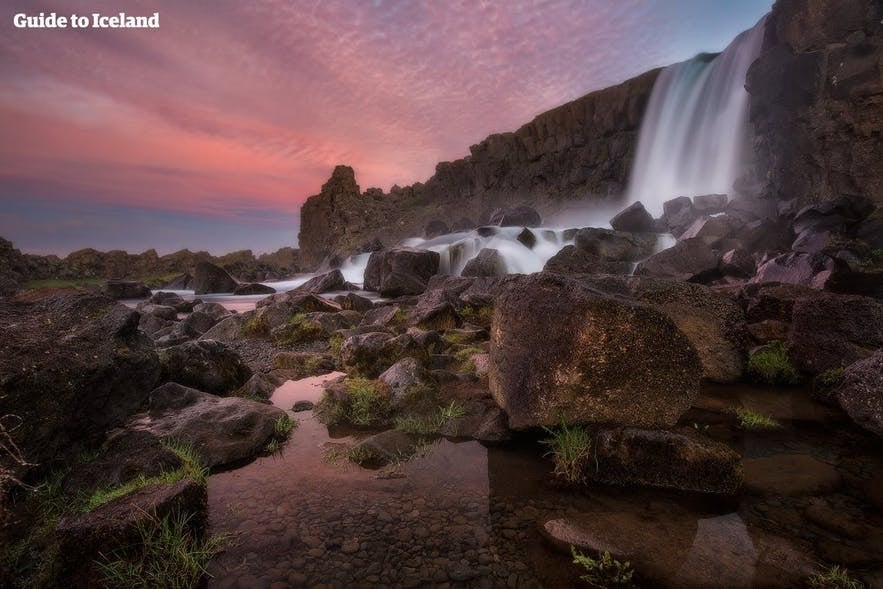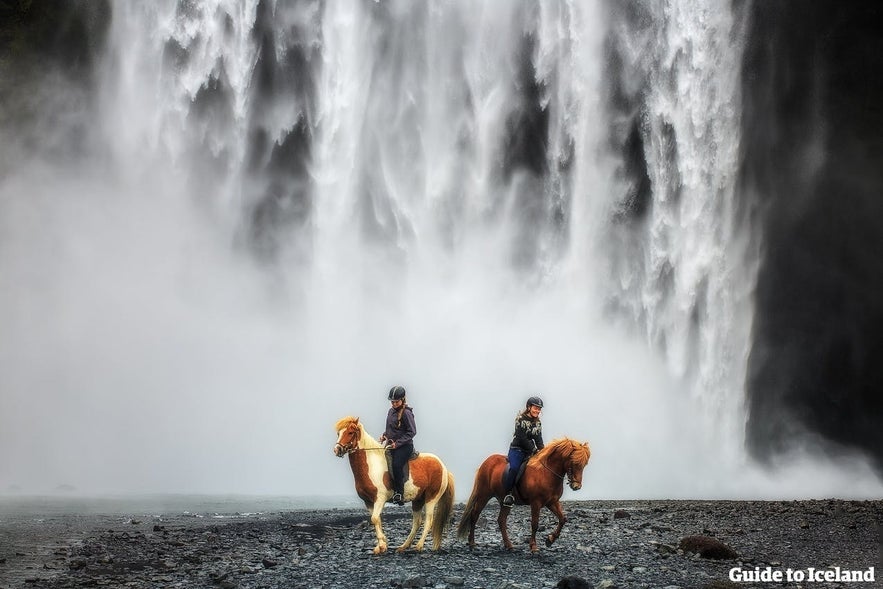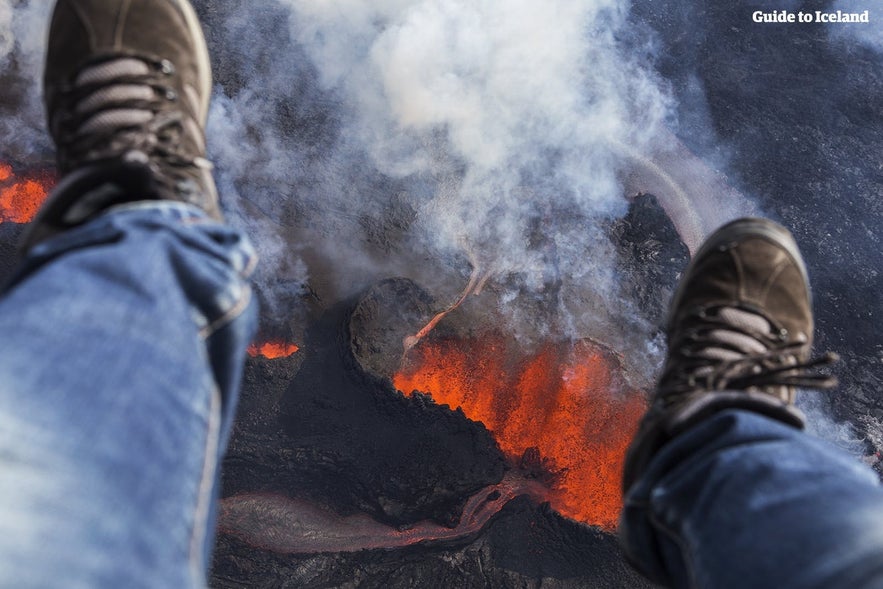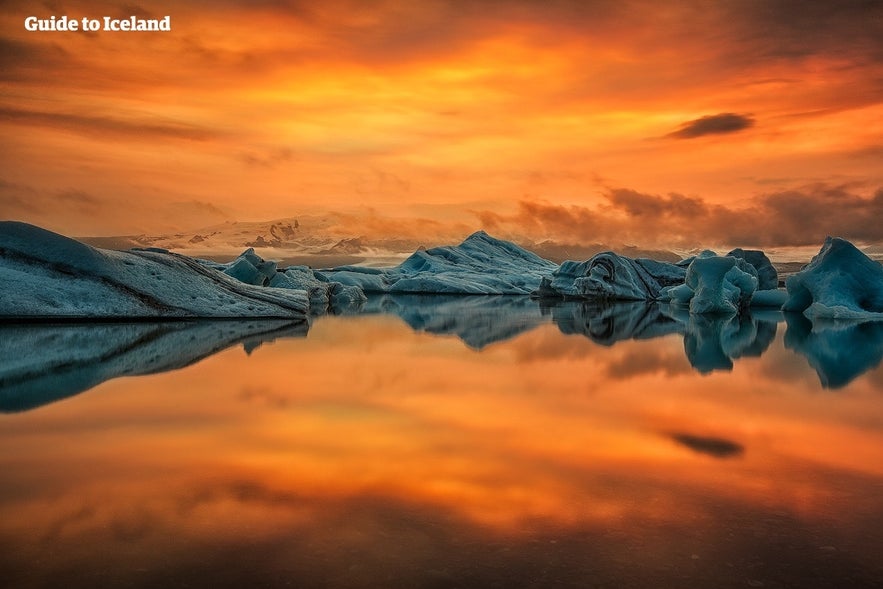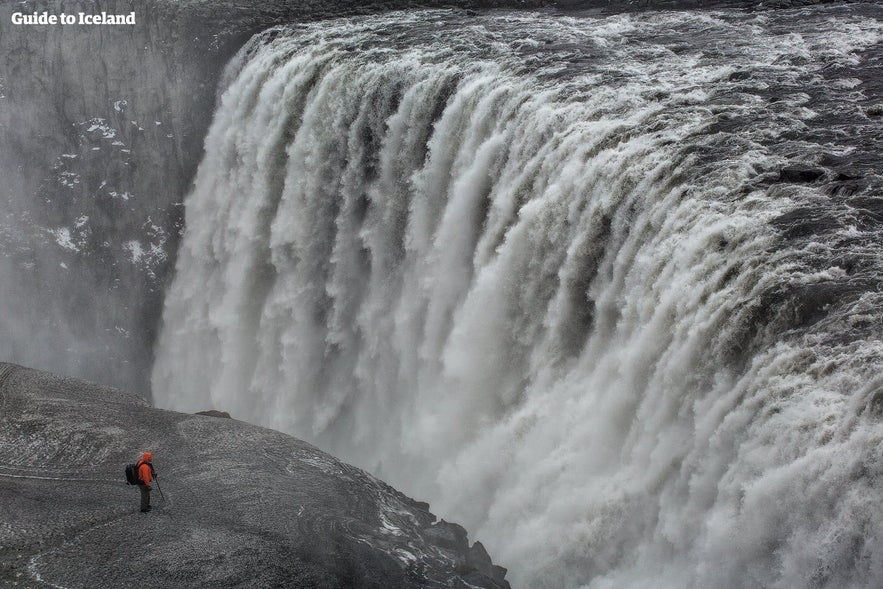
How Expensive Is Iceland? When to Visit & How To Save Money
- The Currency of Iceland
- Accommodation and Transport Costs in Iceland
- Wining and Dining: How Much Does a Meal Cost in Iceland?
- Save With Affordable Groceries
- Get Alcohol in the Right Places
- So What About Coffee Prices in Iceland?
- Shopping in Iceland
- Sightseeing in Iceland
- Weekly and Daily Budgets: How Much You’ll Spend in Iceland
- Route 1 - The Backpacker
- Route 2 - The Minimalist
- Route 3 - The Traveler
- Route 4 - The Big Spender
- Just for You: Package Comparisons
Find out how much a trip to Iceland would cost to help you better budget for your trip. How expensive is Iceland? What’s the condition of the Icelandic currency? Read on to discover our guide on spending and saving money in Iceland.
The nature of Iceland, which boasts glaciers, waterfalls, active volcanoes, ancient mountains, geysers, and black beaches, draws a myriad of international visitors every year, each searching for adventures and memories to last a lifetime. However, there's no reason it needs to break the bank.
The simplest way to save money is by using the VIP Club of Guide to Iceland, which gives you special offers and discounts at various restaurants, bars, and shops around Iceland. The VIP Club is accessible to all customers of Guide to Iceland.
If you're planning to go on self-drive tours around the country, rent a budget car and book a hotel from the largest selection of accommodations in Iceland, it is wise to book in advance while the prices are lower. In case you haven't booked your flight, find the cheapest flights to Iceland and make the most of the land of ice and fire!
- Discover 18 Tips on How to Save Money in Iceland
- Learn how to steer away from the 9 Worst Tourist Traps in Iceland
This picturesque country holds a reputation other than the allure of its natural wonders. The question on everybody’s minds before they decide to book their flight to Iceland is precisely how much money they will need in Iceland. Is Iceland expensive to visit, or is it possible to travel on a tighter budget?
Iceland is currently one of the most expensive countries in the world. In 2018, Icelandic banks made an extensive report about essential travel costs for visitors, and the numbers were staggering.
Staying in hotels is 10-32% more expensive in Reykjavik than in other Nordic capitals; prices of restaurants and lodging exceed the EU average by 44%, while the cost of alcoholic beverages outstrips the same standard by a whopping 123%.
Of course, following the consequences of COVID-19 travel restrictions in Iceland, these numbers can't be considered dependable. However, it gives a general idea of how expensive Iceland is compared to other Nordic countries.
Knowing how expensive Iceland is, you shouldn’t get too disheartened; there are multiple ways to travel in Iceland without emptying your bank account.
The Currency of Iceland

It might surprise some people that a nation of roughly 370,000 people has its very own currency. The currency of Iceland is called the Krona (ISK). It has a long history of independent monetary policies, including being pegged to the Danish krone and the Euro.
The history of the Krona is complicated, with the locals regularly arguing for or against keeping it. What you should bear in mind when traveling to the country is that the currency of Iceland has little value outside its shores. The Central Bank of Iceland determines its worth, and very few banks outside of Iceland ordinarily carry or exchange it.
This is why, when traveling here, you don't need to carry large amounts of currency with you. You can exchange your notes at the airport, but the exchange rate is more favorable if you do so in a bank in Reykjavik.
Also, remember to change your money before leaving to avoid getting stuck with a currency that no bank abroad can accept.
It’s most common for travelers and locals alike to pay for everything on their credit or debit cards. From small food shacks to large shopping centers, everywhere in Iceland accepts card payments, so it may be worth packing light and paying with your plastic.
To make it easier to understand how much you’ll spend in Iceland, all prices have been converted from ISK to USD. However, it’s important to remember that exchange rates do fluctuate constantly. So, the prices quoted here are bound to vary slightly, and you’ll always pay the actual ISK amount.
Accommodation and Transport Costs in Iceland
What you’ll end up paying for accommodation in Iceland largely depends on the type of lodging you select. From cottages in the nature of Iceland and affordable hostels in Reykjavik to Icelandic guesthouses with a local flavor, the variety at hand has a vast price range, and there are indeed options that will suit your particular needs.
- Find out Where to Stay in Iceland
- See also: Top 10 Best Hotels in Reykjavik
Expensive as the overall selection might be, there are very few luxury hotels which most being three star hotels. Despite that, you could pay the same for a hotel as in New York or London. For three or four-star hotels, the prices range from an affordable 50 USD to 850 USD per night, with most establishments offering free Wi-Fi. Breakfast is generally available, but not always included.
Expensive lodging is the case for visitors and locals; the price of a roof over one's head is soaring. There’s a housing problem on the rise in Reykjavik, where the top percent of the community monopolizes the current generation of renters incapable of investing in homes.
A significant factor in this situation is the staggering number of apartments leased through Airbnb in Reykjavik. If you're considering this route, think about the community you're coming to and try not to exacerbate this problem for the locals.
Consider booking official accommodations, and remember that renting entire apartments in Iceland is also available, as is booking people's summer cottages in the countryside, which is much more appreciated. These summer houses offer closeness to nature, tranquility, and exclusivity. They often come with a private hot tub while still being very affordable.
Nobody wants to stay cooped up in a hotel for the duration of their stay, so even if you book the cheapest accommodation with this in mind, booking tours, transportation, and the issue of food still add to your spending.
However, by booking a complete vacation package in Iceland that combines exciting tours and things to do, as well as accommodation, transportation, and breakfast, you save yourself the jolt when taking care of the bill. You only need to drive from place to place, while everything else will have been taken care of at an affordable price.
Your cheapest bet, however, will most usually be camping. Luckily, that is an option of steadily increasing availability when traveling around Iceland. Camping sites are common around Iceland and allow you to get closer to the nature you're here to see. Camping is the most sustainable option, providing that you leave the area in the same state you found it.
When camping in Iceland, you still need the means to travel to your selected locations. That is where renting a car in Iceland or booking a self-drive tour comes in handy. You’re provided with a vehicle or a camper with a rooftop tent and a detailed itinerary that makes you the guide, enabling you to move around the island and visit sights on your own.
Remember that Iceland is situated on the edge of the Arctic Circle, so camping is an infinitely easier option during the summer months. Camping in the Icelandic winter is an activity reserved for only the most avid trekkers, who are experts in reading the weather forecast, possess all the proper equipment, and have years of experience when it comes to surviving in the wild.
- Check out our great selection of winter self-drive tours
- See info on What To Pack for Iceland for All Seasons
- See our guide for How to Drive Safely in Iceland
If you're feeling adventurous, there’s also the option of hitchhiking, which is exceptionally safe in Iceland. If you're driving a rental, picking up hitchhikers and suggesting that they pitch in for petrol is an excellent way of saving gas money.
As for the case of inner-city transport, do not take a taxi unless necessary, and only if you're going to be traveling short distances within the city. It's incredibly expensive. The downtown area of Reykjavik is, in fact, very pedestrian-friendly. It also boasts the public bus service Straeto, where the regular fare is around 4.80 USD and limitless within the hour. Day and month passes are also available for a better price, depending how much you plan to use the bus system.
Public transportation outside the capital is not as good, though. If you’re traveling anywhere outside the city, you should know that renting a small car in Iceland is always a lot less expensive than taking a public bus.
Some newcomers make a big mistake by taking a taxi from KEF Airport to the city. Rent a car, or book the shuttle bus to Reykjavik instead, which will save tenfold.
Wining and Dining: How Much Does a Meal Cost in Iceland?
In the last few years, Iceland has witnessed a surge in its local food scene, with numerous world-class restaurants sprouting all over the capital, some of which have Michelin stars and mentions!
The possibilities for dining are endless. Traditional Icelandic food is fused with other cuisines or spiced up with exotic ingredients to create venues for fine dining that stand tall amongst the competition.
- See a selection of the Best Restaurants in Reykjavik
- Read our Vegan and Vegetarian Guide to Reykjavik
Eating out is relatively expensive (the average plate will cost between 15 USD and 40 USD), so the locals consider restaurant dining a treat instead of a regular occurrence. If you're going to be eating out in Iceland every night of your stay, expect your expenses to soar.
Instead, you should research the possibilities and plan for one or two special occasions. As with most things in Iceland, they might come at a cost, but they’re well worth it for the unique and quality experience.
Save With Affordable Groceries

Be careful when you buy fast food like pizza, burgers, or sandwiches. One might think it's more cost-effective, but Reykjavik's casual dining pretty much falls within the same price range as the more refined dining. A pizza usually costs around 15-20 USD - virtually the same as a meal at a nice restaurant.
Eating out in Reykjavik is expensive. The best way to save a buck is to take advantage of lunch hours when numerous inner-city restaurants offer reduced prices or two-for-one deals on selected dishes.
The most economical way of eating food in Iceland is to cook it yourself. If you're purchasing groceries, avoid the supermarket chains 10-11 or Krambudin, the most expensive grocery stores in Iceland. Shopping there might go as far as doubling your grocery bill! Instead, head straight for the budget supermarkets in Iceland, where locals get groceries.
 Go for low-price stores like Krónan, which has numerous locations in and outside the capital, offering some of Iceland's lowest grocery store prices. You'll find a great range of high-quality and environmentally friendly products for a low price, so this is the best way to make your Iceland trip more affordable.
Go for low-price stores like Krónan, which has numerous locations in and outside the capital, offering some of Iceland's lowest grocery store prices. You'll find a great range of high-quality and environmentally friendly products for a low price, so this is the best way to make your Iceland trip more affordable.
Kronan stores are ideal for lunch-pack shopping before you leave town and embark on your adventures, especially if you're in need of a simple ready-to-go sandwich, pastry, or another easy lunch option. This way, you can skip the roadside kiosks that tend to offer things like burgers and hot dogs, but for sky-high city restaurant prices!
Get Alcohol in the Right Places
As for alcohol, Iceland’s relationship with it is rather complicated. Beer prohibition was lifted as recently as 1989, and although Icelanders like to wet their whistle, the accessibility is somewhat limited compared to international standards.
Alcohol is only sold in the state-run liquor store known as Vinbudin (Icelanders call it "Ríkið," which simply means "The State"), which has limited opening hours. It's always closed on Sundays and public holidays. Therefore, stock up beforehand if you plan to go out or even stay in. However, in these state-run stores, taxes are very high, so the very best bet is to shop duty-free at the airport on arrival!
You should also watch out for what appears to be beer on the shelves of local supermarkets - it's not. Supermarkets are only allowed to sell beverages with a maximum alcohol content of 2.25%. Therefore, these are nearly alcohol-free beers, but many travelers have been fooled by their appearance and become placebo-drunk.
Despite all of this, you can’t avoid hitting the streets at some point, and you shouldn’t since Reykjavik boasts some fantastic high-quality bars and pubs that are a joy to visit. Although the prices are high (roughly 8 USD for a pint), Reykjavik has a vibrant happy-hour culture, where you can hit the bars at the correct times for the best prices.
- See more: Happy Hour: Reykjavik's Cheapest Bars
- Learn about Best Bars for Craft Beer in Reykjavik
Now that you know how expensive Iceland is don’t expect to save money on shots, mixers, or cocktails since those rarely fall under the happy hour menus. Most happy hours include the house’s red and white wines, and sometimes a sugary cider if beer is not your preferred drink.
So What About Coffee Prices in Iceland?
Photo courtesy of Von Mathus Gastropub. No edits made
How much is a cup of coffee in Iceland? You may want to consider it an odd treat instead of a daily buy. A cup of latte or cappuccino goes for around 5 USD, tea at about 3 USD (usually with free hot water refills), and a regular black coffee goes for anything from 2.50 USD to 4 USD (depending on if refills are included).
However, if you're a customer of Guide to Iceland, you can enjoy a 20% discount on coffee drinks at Iceland's premier coffee house chain Te & Kaffi, which goes a long way to save money. All you need to do is claim the offer through the VIP Club.
There are a few ways to get around this. Since Iceland is one of the biggest coffee-consuming nations globally, your accommodation might include it as complementary. You'll also find free cups of coffee at most banks intended for customers if you're desperate for a caffeine fix.
Now that you know some prices in Iceland, avoid buying bottled water. Water from the faucet in Iceland is among the cleanest and purest in the world, full of healthy minerals, and is always safe to drink. Just bring a water bottle with you, and rest assured that every establishment will happily refill it.
Shopping in Iceland
Photo courtesy of Smaralind mall
When shopping in Iceland, the estimation ultimately depends on what you're here for and what you're willing to spend. Although enjoying Iceland is not solely reserved for the wealthy, shopping here might very well be.
Fashion wear in Iceland is taxed through the roof. For instance, a pair of Levi's jeans sell for roughly 40 percent markup compared to Scandinavia, the UK, and the US.
Most locals prefer to do their most extensive shopping online or abroad, heading to discount stores in Copenhagen or Berlin in unison with their travel plans. Icelanders also love to hunt for discounts and sales, in which case the two Reykjavik shopping malls, Kringlan and Smaralind, are the prime destinations.

The city offers a wealth of local design stores, each holding unique and hand-made garments for an attractive price. Shopping vintage is another option. There are a lot of great second-hand stores on Laugavegur street, where you could even score your very own authentic lopapeysa for cheap.
You can also head to Kolaportid Flea Market - the only place in Reykjavik where you can practice the art of haggling. The market is only open during the weekend, and you should go here if you want to pay next to nothing for Icelandic wool products, stamps, postcards, weird knick-knacks, or vintage wear.
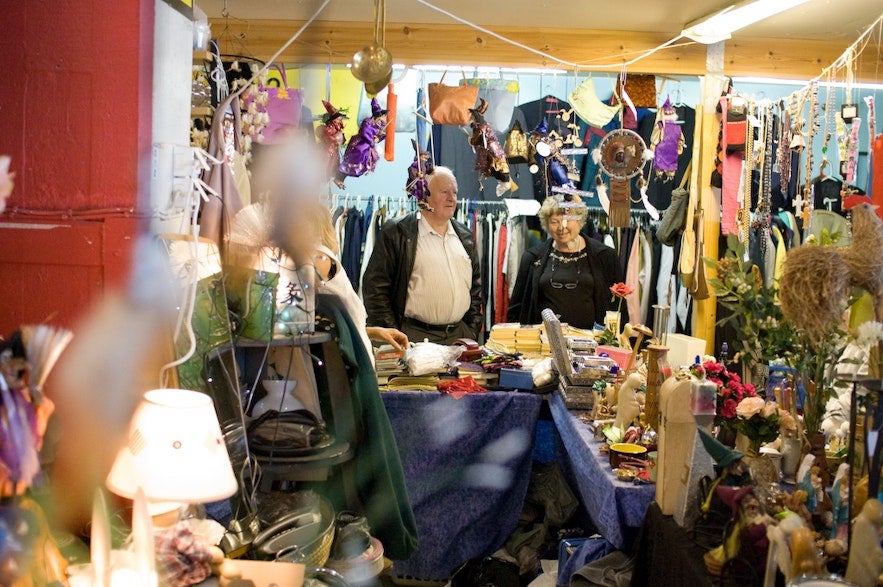
Photo from Wikimedia, Creative Commons, by Karl Gunnarsson. No edits made.
The so-called "puffin shops" that litter the local streets might promise a bargain on authentic Icelandic memorabilia if you're looking for souvenirs. But they’re specially tailored tourist traps selling only mass-produced plastic ornaments from faraway lands.
These shops also drive out local businesses, so you should hunt for the more authentic souvenirs at the National Museum of Iceland gift shop, the Handknitting Association of Iceland, or the aforementioned Kolaportid Flea Market.
The best memories you can buy are the numerous adventures you’ll embark on and all the stunning natural sights you’ll behold. Just remember to pack a camera, and you can bring back all those memories.
Sightseeing in Iceland
They say that the best things in life are free. Icelandic nature boasts wonders unparalleled anywhere else in the world. It’s a place where the geothermally active terrain of hot springs and geysers meets with rural coastal villages, in contrast with wild and uninhabited Highlands.
- Discover Iceland's mountains, fjords, and waterfalls
- See also: Glaciers, caves, and volcanoes in Iceland
Although feasting your eyes on these marvels comes at no cost, you still need the means to get there, a place to stay, and the proper gear and guidance. Nature isn't only there to be looked at; you can and should participate in activities offered to experience it fully.
So when you head to, for example, Thingvellir National Park, a rift valley at the conjuncture of two tectonic plates, you can add significantly to that experience with snorkeling tours in the amazing Silfra fissure. Or, if you visit Skaftafell National Park, home to the largest ice cap in Europe, you can embark on a glacier hiking tour or venture inside an ice cave.
Luckily, Iceland offers various guided services to make these activities available to visitors. This is the case even with a celestial phenomenon like the northern lights in Iceland.
Though they appear in the winter sky of their own accord, some people work around the clock to calculate their arrival for you by using solar wind readings and weather forecasts. If that fails, most companies offer you compensation for your tour.
That compensation usually allows you to embark on the same tour on a different night to try your luck again, just make sure to check with your chosen tour provider. Therefore, the best way to see the northern lights is to book a northern lights excursion for the beginning of your stay.
Tours differ significantly in expenses, but we advise you to book packages, as one adventure will undoubtedly leave you thirsty for more. If you buy your tours one at a time, the costs will add up much faster than if you allow the experts to join a few together.
Iceland also offers endless possibilities for hiking and trekking, where you can explore the vastness of the Highlands over a few days while staying in cabins in between. Hikes are a summer activity, but you still need warm clothes, good hiking boots, and food since there are no shops around.
- Read about Hiking in Iceland
Remember always to make a travel plan and then leave the said plan at safetravel.is so you can be located and rescued if you get into trouble. The nature of Iceland should not be underestimated, but if you follow the proper guidelines, you should be fine.
Apart from embarking into the wild, there are also plentiful opportunities to go sightseeing within municipal limits. The capital of Reykjavik possesses a myriad of museums and sights, some of which are free of charge and some of which you can save a buck when visiting by purchasing passes.
- Check out the 13 Best Cheap Things to Do in Reykjavik
- See also: The Best Museums in Iceland
The Reykjavik City Card is an economical and excellent way to get the most out of your stay in the capital, providing access to a great selection of galleries and museums, all swimming pools in Reykjavik, and public transport.
The pass also gives you a discount on multiple tours and services when you want to leave town, meaning you won't only save money if you stay in the city. You can purchase a 24, 48, or 72-hour Reykjavik Card to meet your needs.
- See also: Top 12 Things to do in Reykjavik
- See also: Secret Spots & Hidden Gems in Reykjavik
Weekly and Daily Budgets: How Much You’ll Spend in Iceland
We hope this article has given you an idea of the different expenses and possibilities when traveling in Iceland. There's nothing left now except to present you with estimated budgets to better your abilities to plan the journey of your dreams.
Route 1 - The Backpacker
The Backpacker's approach to traveling in Iceland includes no transport except booking the affordable airport shuttle to Reykjavik. Otherwise, they can hitchhike.
They would camp in the city, where the cheapest option goes for around 23 USD per person. There are also a couple of additional spendings, such as electricity rent or using a washing machine once.
This person would cook their meals, of which rouchly 70 USD should buy them groceries for the week. When we throw in two 72-hour Reykjavik City Cards, showers are covered with daily trips to one of Reykjavik's geothermal swimming pools.
The Backpacker can sightsee the city, hike up Mount Esja, and hitchhike to nearby municipalities such as the Reykjadalur hot spring valley in Hveragerdi or the Reynisfjara black sand beach in Vik.
One week's expenses for this approach come to around 300 USD or 42 USD daily for one person.
Extra: Backpacker's Splurge
With one night out, one night eating out, and one budget tour such as a Golden Circle Minibus Tour for one person, the estimation rises to about 435 USD for the week or around 62 USD per day.
Route 2 - The Minimalist
The Minimalist's approach includes hostel accommodation at about 55 USD per night, where cooking facilities enable them to buy groceries for the week for around 70 USD. Let's throw in a case of Icelandic beer for roughly 16 USD to keep the fridge stocked!
This individual would go to a cafe a couple of times and eat out once and allow themselves to purchase one combo tour, such as Whale Watching and the Golden Circle combo tour, for approximately 202 USD.
They would book an affordable airport transfer from Keflavik Airport for around 37 USD, but otherwise use the public transport system or rent a small car for one day for around 46 USD.
The Minimalist could spend a day driving along the South Coast or visiting the Snaefellsnes peninsula. A small car will suffice if the season is summer.
One week's expenses for this route come to about 570 USD or 81 USD daily.
Extra: Minimalist's Splurge
Booking admission to the luxurious Sky Lagoon and one good night out in Reykjavik, the estimation would rise to around 675 USD for the week or 96 USD per day.
Route 3 - The Traveler
The Traveler would book hotels or a guesthouse for around 85 USD per night and rent a four-wheel drive car in Iceland for the whole week, with gas prices at roughly 2.30 USD for the liter.
They would hit a cafe three times, eat out maybe four times and buy additional groceries for 62 USD. They might purchase a couple of meet-on-location tours, such as a horse riding tour in beautiful scenery near Hveragerdi for 67 USD and a Silfra snorkeling adventure at Thingvellir for 140 USD.
The Traveler uses their four-wheel drive car to explore the Highland roads and sightsee the wild nature of Iceland and stay outside Reykjavik for several nights.
A week like that would come to about 1,380 USD, or 197 USD daily.
Extra: Traveler's Splurge
With one all-included Beer & Food Tour in Reykjavik for 77 USD and admission to the world-renowned Blue Lagoon, the week goes up to 1,594 USD or 227 USD per day.
Route 4 - The Big Spender
The Big Spender might book a nice hotel for 235 USD per night and a cottage in the countryside for 118 USD per night. That way, they could enjoy the full extent of gorgeous rural landscapes and the capital city.
They would rent a luxury car for seven days at 95 USD per day and go on three combo tours for 490 USD.
They might hit a cafe five times during the week and eat out every night. They wouldn't hesitate to match their meals with wine and craft beer, doubling restaurant expenses.
The Big Spender could, of course, spend a lot more, but this data is meant to showcase a week where the goal isn't to spend money but to see Iceland off a budget.
This approach would leave the week at 2,720 USD or 388 USD per day.
Extra: The Big Spender's Splurge
If this individual wants to splurge, the sky's the limit. Why not add a helicopter tour, exploring Iceland from above and maybe even touching down on an actual glacier for 590 USD?
Just for You: Package Comparisons
Now that you've seen the different approaches to estimated Iceland budgets, you can compare the costs with self-drive tours and all-included travel packages.
A week's self-drive tour around the whole country, with a car, accommodation, breakfast, and a Blue Lagoon voucher such as this one is 754 USD, where added meals and gas expenses would bring the estimation to 140 USD a day.
This would top the Traveler's approach - while including more comforts and a lot more sightseeing. There are also budget self-drives, such as this budget-friendly Golden Circle & South Coast tour, available for 743 USD that don't have breakfast or vouchers - ideal for the Minimalist!
A package such as this customizable Icelandic Wonders tour offers Reykjavik accommodation for five nights, one night at a country hotel, two bus tours, and a Blue Lagoon voucher, all for 1,092 USD.
Add a few night outs to that, and the estimation would come to 210 USD per day, which matches the Traveler's approach and tops the Big Spender route by miles in being economical. The possibilities are endless, but this should give you an idea.
PLEASE NOTE that all prices listed are subject to change, and we do our best to keep them updated to show the correct information. If you have any additional questions on the costs of traveling in Iceland, don't hesitate to ask them in the comments below, and we will answer them as soon as possible.
Other interesting articles
Shopping in Iceland
Where are the best places to shop in Iceland? Which shops are concentrated in the capital, and where can you find what you’re looking for around the country? What are the best souvenirs to buy in Ic...Read more
Guide to the Icelandic Krona (with a currency converter!)
Learn everything you need to know about the currency of Iceland, the Icelandic krona. Discover the Icelandic krona's history and learn practical information you can use to create the perfect trip to I...Read more
The Cheapest Time to Go to Iceland
When is the cheapest time to go to Iceland? What is the best time to fly to Iceland? Are there any times of the year when the country’s services become more expensive? Continue reading for the ult...Read more

Download Iceland’s biggest travel marketplace to your phone to manage your entire trip in one place
Scan this QR code with your phone camera and press the link that appears to add Iceland’s biggest travel marketplace into your pocket. Enter your phone number or email address to receive an SMS or email with the download link.

